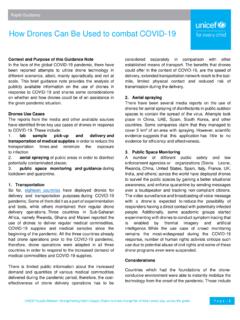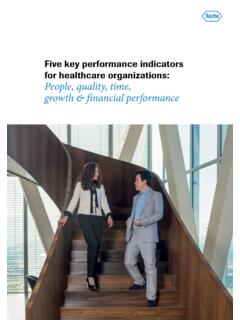Transcription of Liquefied Natural Gas (LNG) - SPE-GCS
1 Liquefied Natural Gas (LNG) For the 2014 SPE Roughneck Camp Chris Caswell, Director LNG and FLNG KBR July 17, 2014 How to Plan a 30 Minute Discussion on LNG 2 SPE Objective: What happens after gas is produced and before it becomes a marketable product (For liquid Natural gas transportation, specifically)? Presentation Strategy: Short list of key messages Cover primarily the liquefaction link of the LNG chain Encourage questions Key Messages for Today 3 Produced gas (even when separated or treated near the reservoir) requires extensive and mandatory conditioning to make LNG LNG projects are large complex projects, often in remote locations Process design is not simplistic, Scope is highly civil/mechanical, Projects are capital intensive, and Not all LNG plants are created equal (NALPACE) Offshore liquefaction (FLNG)
2 Significantly increases the complexity of an LNG project Items Not Addressed Today 4 LNG transfer, storage, regasification, and LNG shipping Regas: more simplistic than liquefaction, but important Shipping: decades of efficient manufacturing methods Economics: Capital cost estimates and schedules ( US$ per ton of LNG) Onshore LNG vs. FLNG, baseload plants vs. tolling facilities Market views / growth of LNG Industry statistics, project forecasts, and LNG news Review of liquefaction projects and process technologies History, size, and growth of LNG trains and complexes Licensor share, process selection, cycle efficiency, equipment, etc.
3 Permitting, siting, approval process in the USA Terminal (regas) conversions to liquefaction (export) Ownership of projects and the contracting community Why LNG: Long Distance Transportation of Natural Gas The Transportation of Natural Gas Pipeline Gas to Chemicals Methanol DME Ammonia GTL & LNG LNG Pipeline & LNG What is LNG? Typically, LNG is: Cool Natural gas at essentially atmospheric pressure Liquefied at -161 C (-256 F) and slightly subcooled Colorless, odorless, non-corrosive, and non-toxic A mixture of components, primarily C1, C2, C3, and N2 Example composition of LNG (mol %): 85-90 % methane (C1) 3-8 % ethane (C2) 1-3 % propane (C3) 1-2 % butanes (iso-C4 and n-C4) 0-2 % pentanes (iso-C5 and n-C5) 0-2 % nitrogen (N2) Source: GAS CONDITIONING FOR IMPORTED LNG by D.
4 McCartney for 82nd annual GPA Convention, March 2002. Volumetric Reduction of Natural Gas Natural Gas LNG Plant LNG -161oC Volume Reduction 600:1 FEED GAS N2 C1 C2 C3 C4 C5 Hg H20 CO2/H2S C6+ Condensate Removal Gas Treating NGL Removal Liquefaction End Flash Condensate Acid Gas Natural Gas Liquids Water Mercury LNG What are the End Uses for LNG? Imported LNG can support the following activities: Augmenting baseload pipeline supply Support peak-shaving activities (peak demand periods) Fuel for nearby power plants Feedstock for industrial use (Ammonia, Ethylene) Fuel substitution ( Natural gas for diesel) at reduced cost How LNG is Made.
5 The Traditional LNG Value Chain Gas Production & Transmission Gas Treatment & Liquefaction LNG Receiving Terminal LNG Shipping Natural Gas End Use Key Issue - Integrating all links in the chain LNG Facilities Are Remote NIGERIA LNG SITE early 1990 s LNG Facilities Are Complex NIGERIA LNG FACILITY What Does an LNG Train Look Like? SEGAS LNG First single train of 5 Mt/a What Does an Complete LNG Facility Look Like? LNG Facility Example: SEGAS LNG Train 4: Mt/a Train 3: Mt/a Design of an LNG Plant Australia Northwest Shelf LNG Plant 1989, 1993 Design Factors Affecting Overall Cost Targeted Plant Capacity Number/size of Process Trains Series or parallel within train Large vs.
6 Small train Common Areas / Utilities Availability / Reliability Sparing, maintenance, startup/shutdown OPEX costs Modular Concepts Constructability Site Selection Marine access, soils, earthquake Design Margins Plant Layout project Execution Schedule (life cycle) NALPACE Not all LNG Plants are Created Equal Because of site-specific criteria, it is unwise to compare one plant to another based solely on capacity and capital cost (US$ per Mt/a) Natural Gas Data Feed Gas to LNG Plant Typical inlet Composition? No, but an example: Nitrogen, Methane Ethane, Propane Total Butane+ Carbon Dioxide Trace.
7 H2S, Hg, RSH, COS, BTX In reality, there is no such thing as a typical inlet gas composition Coal seam methane reserves can have > 98% methane Acid gas content (CO2) as high as 15% in Australia and potentially much higher (over 50%) in stranded fields Associated gas reservoirs could have waxes ( C20+) that affect flow assurance Work (input) Basic Refrigeration - Simple PFD Process Flow Diagram Q High Temperature (Ambient) Q Low Temperature (Sub - Ambient) Condenser Suction Drum Compressor Heat Exchanger J-T Valve Accumulator Rough rule of thumb : 35 MW of shaft power per Mt/a for efficient liquefaction processes Where the magic happens GAS in LNG out Large amount of Energy Input Driver (not shown)
8 Compressor Heat Exchangers Refrigerant is a Vapor Refrigerant is a Liquid Typical Block Diagram Liquefaction Plant DEHYDRATION & MERCURY REMOVAL CHILLING LIQUEFACTION NITROGEN REJECTION REFRIGERATION SYSTEM REFRIGERATION SYSTEM OFFSITE LNG STORAGE HYDROCARBON FRACTIONATION Natural GAS FEED C2 FUEL FUEL LNG C3 C4 BY PRODUCT GASOLINE C4 C2 A two-stage refrigeration cycle is used in this example CO2 REMOVAL Typical Block Diagram - Liquefaction Plant CO2 REMOVAL DEHYDRATION & MERCURY REMOVAL CHILLING LIQUEFACTION NITROGEN REJECTION REFRIGERATION SYSTEM REFRIGERATION SYSTEM OFFSITE LNG STORAGE HYDROCARBON FRACTIONATION Natural GAS FEED C2 FUEL FUEL LNG C3 C4 BY PRODUCT GASOLINE C4 C2 Acid Gas Removal Requirements Removal of CO2 to 50 parts per million (ppm) CO2 would freeze at cryogenic temperatures Safely below solubility limit of CO2 in LNG Removal of H2S (to end-user pipeline specifications) Specification is often total weight of sulfur in LNG product Targeted removal of Mercaptans and COS Acid Gas Disposal (after capture) Venting (in small quantities), thermal oxidation (burning)
9 , or Sequestration (large quantities, Gorgon LNG) About 80% of AGRU Cost is associated with Solvent Regeneration System AGRU absorber is heaviest vessel (but not largest) in the plant Typical Acid Gas Removal Scheme Process Flow Stripper Low-Pressure Flash Reboiler Reflux Condenser Acid Gas Lean Amine Bulk Absorber Lean Absorber Treated Gas Semi-Lean Amine Amine Cooler Rich Amine Sour Gas Sour Gas Flash Gas High-Pressure Flash Lean/Rich Exchanger Typical Block Diagram - Liquefaction Plant DEHYDRATION & MERCURY REMOVAL CHILLING LIQUEFACTION NITROGEN REJECTION REFRIGERATION SYSTEM REFRIGERATION SYSTEM OFFSITE LNG STORAGE HYDROCARBON FRACTIONATION Natural GAS FEED C2 FUEL FUEL LNG C3 C4 BY PRODUCT GASOLINE C4 C2 CO2 REMOVAL
10 Typical Dehydration Scheme Process Flow Water Saturated Natural Gas Water Drier Precooler Hydrocarbon Liquid Regeneration Gas Compressor Regeneration Cooler Regeneration Gas Knockout Drum Dry Gas To Liquefaction Regeneration Heater Filter 2 Driers (Absorption) 1 Drier (Regeneration) Molecular Sieve Process Vessels Commonly a 3 bed system (2 operating) Outlet specification: 1 ppm water Regeneration System to remove water from beds Mercury Removal Unit Mercury has to be removed from Natural gas to prevent corrosion in aluminum equipment the Main Cryogenic Heat Exchanger Removal of mercury by.







